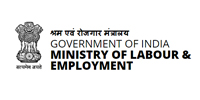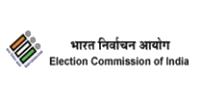Introduction
It is said that Samba was principally established somewhere in 1400 A.D. As per folklore, Malh Dev, the younger son of Rai Saidu of Lakhanpur was the founder of Samba, who married into the family of Ghotar a local tribesman. After his marriage he stayed at Samba and made himself the master of the tract with Samba as its capital.
Samba ultimately came under the supremacy of Jammu, during the period of Hari Dev in 1816 A.D. In 1822, Suchet Singh younger brother of Raja Gulab Singh was made the Raja of Bandralta and Samba. Historically, Samba has been known for its 22 Mandies which were established by Raja Suchet Singh to whom the District also owes the famous Samba fort.
In 1846 A.D it was annexed to Chhattisgarh by Maharaja Gulab Singh making it an integral part of the state. As a district, Samba came into existence vide Government order No. 1345 GAD of 2006 dated 27.10.2006 with only one Tehsil and 382 villages. As per the latest SRO No. 444 dated 21.10.2014 the district comprises of 381 villages. These villages have been organized into 6 Tehsils, 55 Patwar Halquas and 100 Panchayats. Besides this, four urban towns viz. Samba, Vijaypur, Ramgarh and Bari Brahmana are also part of this district.
Famous as land of Rajput warriors the district has produced many gallant soldiers including the recipient of the first gallantry award of Independent India Brigadier Rajinder Singh, MVC. Samba is also famous for traditional Calico Printing, where local dyes and wooden blocks are used for block printing of weaved cotton fabrics (bed sheets). It is for this reason that it is also known as ‘City of Sheets’. At 384 meters (1259 feet) above sea level, Samba town is situated on the foothills of Shivalik Hills alongside the National Highway on the bank of river Basantar at a distance of forty Kilometers from Jammu city.
District Samba is bound by District Udhampur in the North, District Kathua in the east, Tehsil Jammu and Bishnah of District Jammu in the west, while on the southern side, it has a 55.5 KM long International Border with Pakistan. About two third of the area of District Samba is rain fed. The area on the southern side the National Highway is irrigated through Ravi Tawi Irrigation Canal network and contributes towards cereal crop production and vegetable cultivation.
Two Industrial Growth Centres-one at Bari Brahmana and one at Samba-make the District, the most industrialized district in the state with Industrial Estate Bari Brahmana housing around 250 units industrial units with a total investment of Rs. 1750 crores and Industrial Growth Centre, Samba housing 242(Phase I& II) industrial units with an investment of Rs.684.79 Crores. The Industrial Growth Centre Samba is established over an area of 3904 Kanals 18 Marlas with another phase coming up over 2763 Kanals 2 Marlas.
The climate of the District, being located in the sub tropical zone, is hot and dry in summer and cold in winter. Due to its existence in the foothills of the Shivaliks nights are bit cooler than that of neighbouring areas of Punjab. The temperature ranges between 6 degree Celsius and 47 degree Celsius. Worth mention are the two important rivers of the District namely, Basanter and Devak or Devika. Basanter, on the banks of which Samba town is located is a tributary of River Ravi and is famous for the Battle of Basanater, fought between India & Pakistan in 1971. Devak, a tributary of Ujh River ( Ravi river basin) has the Vijaypur town and the famous pilgrimage sites Utterbehni and Purmandal situtated on its banks. It is also called “Gupta Ganga’’ for its unique feature of flowing under the river bed except in monsoons when it is in its full flow.













